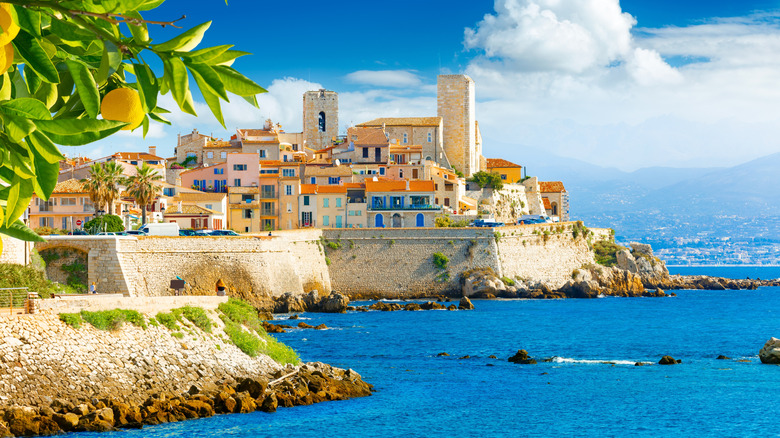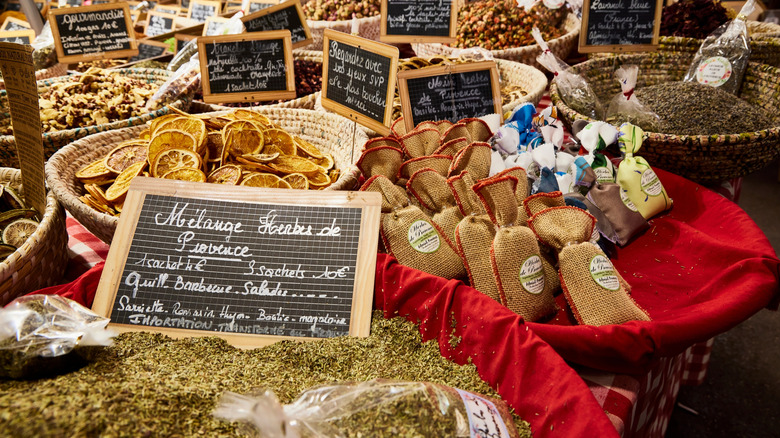A Historic And Colorful Town In France Boasts Golden Sand Beaches And Coastal Views
Between the buzzing hot spots of Nice and Cannes lies a relatively underrated destination to visit on your next trip to France. Like stepping into a postcard, Antibes offers a heady mix of history, art, and colorful Provençal charm, all in a stunning Mediterranean setting.
In the old part of town, known as le vieil Antibes (or la vieille ville d'Antibes), the medieval cobbled streets and adjacent Port Vauban yacht harbor are an invitation for a lazy stroll, with frequent stops to ogle at the superyachts. Antibes is dripping with history. Founded by the Greeks in the fifth century B.C., the settlement thrived under the Romans, survived invasions, and became a strategic French stronghold in the 15th century. With the 19th century came a significant shift to tourism, particularly after World War I, as the district of Juan-les-Pins became a glamorous resort attracting the who's who of American high society.
Antibes is a city of art. When Picasso first moved to the Côte d'Azur in 1946, he set up his studio in the imposing Château Grimaldi, which is now the Picasso Museum. The visit is a must, even if you are not an art enthusiast, for the jaw-dropping views of the coastline from the sculpture terrace. The seven-day museum pass for under $18 is a smart way to skip the lines, including access to the Picasso Museum; the Archaeology Museum, retracing the story of Antibes all the way to antiquity; the Peynet Museum, dedicated to the beloved local cartoonist; and Fort-Carré, a bastion of military defense dating back to the Renaissance. The nearest airport is Nice Côte d'Azur Airport (NCE), about a 22-minute drive (or roughly 40 minutes by bus).
The golden sand beaches of Antibes and Juan-les-Pins
With the turquoise waters of the Med and the easy access to world-class dining and shopping, Antibes rivals the best seaside resorts in the world. On the eastern side of Antibes, towards La Brague and Fort Carrée, the scenic pebble beaches tend to be less crowded, with conveniences like showers and snack bars. You will need water shoes (pebbles can hurt sensitive soles), and be confident in the water, as it gets deep quite quickly. If you are traveling with children, La Gravette, tucked below the medieval walls in the city center, is a family-friendly sandy beach offering calm, shallow waters.
On the eastern side, the row of beaches in Juan-les-Pins is simply picture-perfect. This is the glamorous realm of private clubs, water sports, and trendy beach bars. For the full VIP experience, book your sun loungers and get your food and drinks delivered directly to your little spot of paradise. Aside from the private areas of the beach, which you can identify by the neat rows of matching chairs and umbrellas, there are also public areas where you are free to find your own spot.
To get away from the crowds, the pristine beaches of the Cap d'Antibes peninsula are ideal for swimming, snorkeling, and paddleboarding. The scenic Tirepoil footpath, part of the greater Sentier du Littoral trail, takes you on a two-hour discovery of hidden coves and panoramic vistas. The three-mile path is relatively easy to manage with the appropriate footwear, although there are narrow steps in some areas. Then, in Port Vauban, specifically quai Henri Rambaud, don't miss the monumental sculpture The Nomad, by Jaume Plensa — a pensive figure made of an ethereal mesh of letters, looking out to sea.
Antibes is a playground for foodies
The food scene in Antibes and Juan-les-Pins reflects its traditional cuisine, while embracing international influences. The exceptional local produce is a feast for the senses. For a truly local experience, head to the bustling covered market, held each morning in the Cours Masséna, steps away from the Picasso Museum. The aisles burst with color, where tomatoes and zucchini compete for attention with baskets brimming with spices, flowers, and artisanal honey. You will find hundreds of different cheeses and charcuterie for a picnic, and perfect souvenirs like the fragrant "herbes de Provence," handmade soaps, and traditional printed fabrics — just be sure to get there before it closes at 1 p.m.
While there are endless places to eat, for the best memories, try to avoid tourist-trap restaurants. Usually, an extensive menu and a greeter out on the sidewalk are telltale red flags. For example, La Petite Escale bistro stands out for its simplicity, with a short list of dishes and a menu that changes with the seasons, which are two signs that you are in good hands. At the Michelin-starred Le Figuier de Saint-Esprit, near the yacht harbor, Chef Christian Morisset and his son revisit local flavors with a contemporary twist. The finest cuisine doesn't have to break the bank, as the two-course lunch special (drinks not included) starts at around $60.
Antibes delivers an infectious dose of "joie de vivre" even through the simplest pastimes, like window shopping along the medieval lanes, or sipping a glass of rosé by the water. This hidden gem on the French Riviera offers a perfect blend of ancestral heritage and coastal living for an unforgettable Mediterranean vacation.


